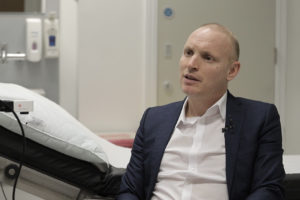Personalized Therapy of Cancer
Oncologist Justin Stebbing on targeted therapies, side effects of chemotherapy and how multidisciplinary appro...
The video is a part of the project British Scientists produced in collaboration between Serious Science and the British Council.
Even Isaac Newton probably thought about space travel. There is a wonderful picture in his book called Principia showing cannon balls being fired from mountain top and they are fall down to Earth. But is the cannon ball is fired fast enough then its trajectory curves downwards no more steeply than the earth underneath it and it goes into orbit. And he calculated that in order to go into that kind of orbit it would have to be fired at 18000 miles/h, that is 25000km/h.
The case of sending people into space is getting weaker all the time as minituarisation gets more advanced and as robotics get better. And of course, it is far cheaper to send robots, you do not need to bring them back, and that is the way in which we learned a great deal about the solar system.
I think the future of manned space flight lies with the private companies, and there are some of these in the United States already. Because they can accept higher risks than NASA or ESO can impose on civilians publicly funded. And so my scenario is that companies like those already existing in the space: in the United States SpaceEx run by Elon Musk and Blue Origin run by Jeff Bezos – these are two billionaires in the US – I think, they will be launching people into space.

Oncologist Justin Stebbing on targeted therapies, side effects of chemotherapy and how multidisciplinary appro...

The new research investigates the climate states of rocky planets of Earth and Super-Earth-sizes with stable d...

Physicist Martin Rees on Isaac Newton, theory of general relativity, and black holes